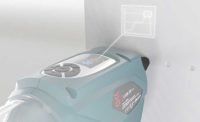Say “Krazy Glue” to someone outside the adhesives and assembly industry and you’re likely to get them thinking of the decades-old commercial of the construction worker stuck to, and dangling from, a high-rise steel beam. But say the same thing to an industry person—and they immediately think cyanoacrylate or CA, which is a type of adhesive that’s growing in popularity.
Accidently discovered by Eastman Kodak in the late 1940s, CAs are fast-acting industrial adhesives that, chemically, consist of either a methyl-2 or ethyl-2 monomer of cyanoacrylate molecules. Both types cure very rapidly in the presence of water.
One of the leading CA suppliers today is Henkel Corp., which makes the Loctite brand. Loctite was a separate company in the 1960s when it purchased the Eastman 910 product from Kodak and repackaged it as Quick Set 404, which is still sold today. Loctite continually increased its market share over the next 30 years before being purchased by Henkel in 1997.
“We are always making new formulations,” says John Lafond, technical manager for instant adhesives at Henkel. “At any time, we have four to seven developmental projects for CAs ongoing.”
Last year Henkel improved the formulation of two premium-grade CAs, Loctite 401 and 406, to make them heat resistant up to 250 F. Previously they could resist temperatures up to 180 F. Loctite 401 is an all-purpose adhesive suitable for use with plastic, metal, rubber and smooth acidic substrates. Loctite 406 is particularly suited for plastics, elastomers and rubber.
In 2010, the company introduced Flashcure CAs, which can be cured in less than 5 seconds when exposed to low-intensity ultraviolet (UV) or visible light of the appropriate wavelength. These CAs use photoinitiators to ensure surface cure in seconds. The CAs also cure quickly at room temperature in shadowed areas.
Manufacturers that use UV CAs in their assembly processes need to make sure the material stays fluid in the syringe prior to application. One way to achieve this is to use light-sensitive syringe barrels, such as the Optimum series made by Nordson EFD. The UV-block barrel is amber in color and blocks UV and visible light wavelengths from 240 to 500 nanometers, while allowing the fluid level to be monitored.
What’s New in (and Unique About) CAs?

Series 406 cyanoacrylate has been reformulated to make it heat resistant up to 250 F. Well suited for plastics, elastomers and rubber, the CA previously could resist temperatures up to 180 F. Photo courtesy Henkel Corp.
Looking for a reprint of this article?
From high-res PDFs to custom plaques, order your copy today!









